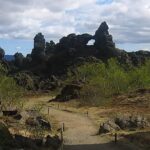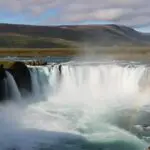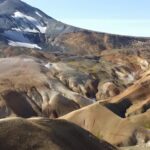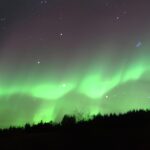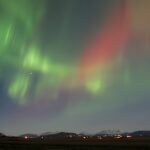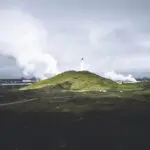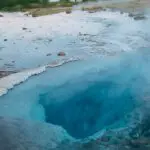The Icelandic flatbread, or flatkaka (or flatkökur plural), is a traditional staple—an uncomplicated round bread traditionally crafted without leavening agents, comprised solely of rye flour (sometimes barley) and water. Today, the recipe includes a blend of rye flour and whole wheat or exclusively whole wheat, occasionally enriched with oatmeal and baking powder. Some variations even incorporate sugar into the dough.
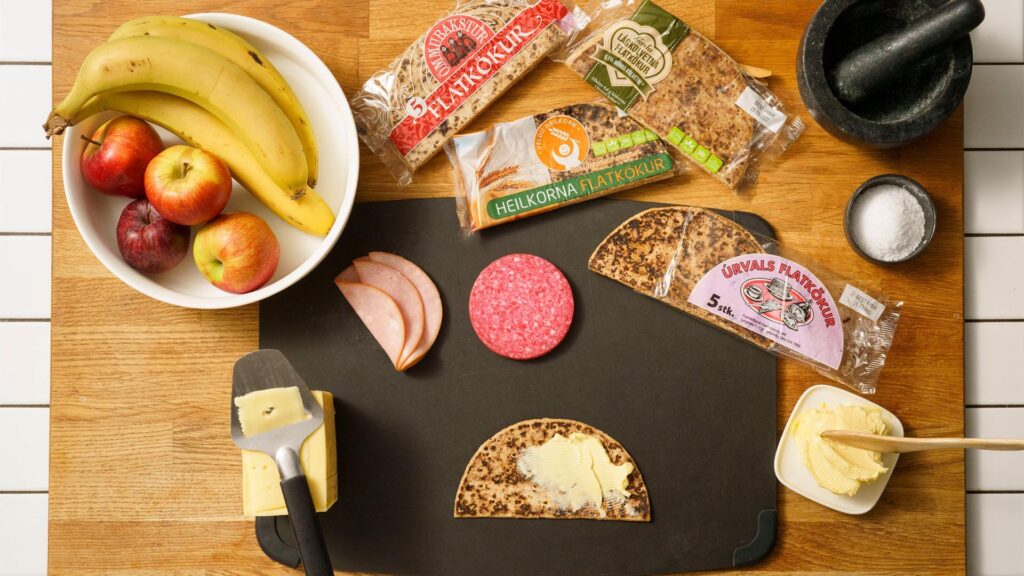
These flatbreads typically measure around 15 cm in diameter and 2-3 mm thick, displaying a characteristic brown hue with black spots. Initially, they were baked in fireplaces—either directly on embers or on an iron plate atop embers. As technology advanced, stovetops replaced fireplaces. Cast iron pans are popular today, making them easy to stack up warm or briefly soaked in water to prevent them from hardening.
Traditionally cut into halves, quarters, or sixths, flatbreads are paired with butter, ham, smoked lamb (hangikjöt), smoked salmon, cheese, pickled herring, or other toppings. However, until the mid-20th century, the common practice was to enjoy them buttered as a side dish.
In the Westfjords until the turn of the 20th century, larger flatbreads measuring 25-30 centimetres in diameter and over a centimetre thick were baked for Christmas. Used as a plate for Christmas food, this custom echoes a European tradition from the Middle Ages.
Flatbread is a great road trip food as well. It doesn’t take up much space, and with the myriad of different toppings you can use, you will be spoilt for choice. Check out our blog for road trip food ideas. You will also get to taste flatbread on our Reykjavik Food Lovers Tour. You can either join a public or private tour. Please contact us for more information.
Origin of Icelandic Flatbread
The origins of Icelandic flatbread trace back centuries to the settlement of Iceland in 874 AD by Norse people. The Icelandic climate’s challenges for growing corn meant that bread did not dominate the diet; butter on dried fish was a common choice. However, the adaptability of rye to cold climates made flatbread a prevalent and culturally significant item. Notably, it holds a prominent role in the þorrablót, the Icelandic mid-winter festival spanning the month of Thorri, commencing on Husband’s Day in January and concluding on Woman’s Day in February.
This blog post offers three distinct recipes for flatkökur (flatbread). The first dates back to 1891 from a popular Icelandic home economics book. The second is from the Home Guidance Service operated by The Icelandic Federation of Women’s Institutes. The last comes from the website Veitingageirinn (The Restaurant Sector), shared by a seasoned professional baker.
The 1891 Home Economic Book’s Recipe for Icelandic Flatbread:
- 1 pound (0.45kg) unbolted rye flour
- Just over a quarter litre (1 cup+tbsp/ 9.25 oz) of water
Directions:
This is kneaded together and divided into several parts. Each part is then kneaded between the hands and flattened into a round cake; prick with a fork and bake on an ember fire the same day or the next. They will taste sour if they are kept unbaked for a long time.
The Home Guidance’s Recipe for Icelandic Flatbread:
- 200 grams (7oz) of flour
- 200 grams (7oz) whole wheat flour
- 200 grams (7 oz) rye flour
- 4 teaspoons baking powder or baking soda
- 1 teaspoon salt
- 4 1/2 – 5 dl (1.8-2 cups) heated milk
Directions:
Mix everything together except the milk, which is heated and added last. Stir/knead together and divide into 10 equal parts.
Each part is kneaded between the hands, and it is good to apply oil to the hands so that the dough does not stick.
Flatten into round cakes, prick with a fork and bake immediately on an electric stove or pan.
The Restaurant Sector’s Recipe for Icelandic Flatbread:
- 150 grams (5.25 oz) flour
- 150 grams (5.25 oz) whole wheat flour
- 150 grams (5.25 oz) rye flour
- 100 grams (3.5 oz) of sugar
- 3 teaspoons baking powder
- ½ tsp salt
- 400 grams (14 oz) warm milk
Directions:
Mix all the dry ingredients together, add the warm milk and stir into a good dough. Roll out the dough very thin and cut into a circle, poke with a fork here and there.
Bake the dough in a very hot pan until it has a lovely colour, then turn it over and bake on the other side until it has a beautiful colour on the cake.
After baking, spray the cakes with water and cover them with a damp cloth.

